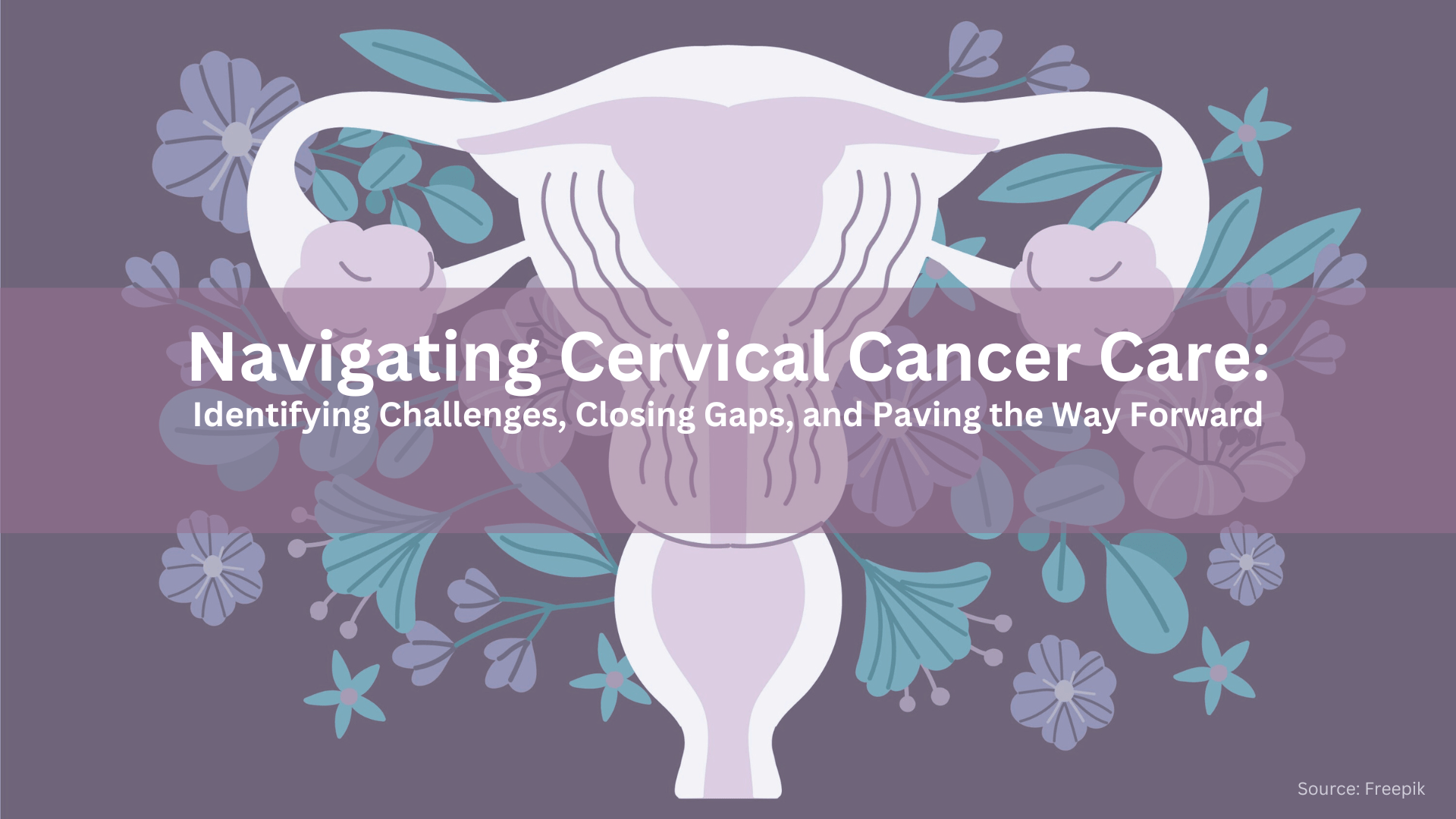Introduction:
Cervical cancer, once a leading cause of female mortality, has seen significant advancements in screening and vaccination. Despite progress, persistent gaps in prevention, diagnosis, and treatment remain. This blog addresses these loopholes, exploring their reasons and proposing actionable solutions for a more comprehensive approach to cervical cancer care.
The World Health Organization (WHO) indicates that more than 90% of cervical cancer-related deaths occur in low- and middle-income countries, where the availability of treatment is frequently restricted. A study featured in The Lancet Oncology proposes that as much as 40% of global cervical cancer fatalities may be linked to insufficient access to adequate treatment. This underscores the critical need for improved accessibility to healthcare services, especially in resource-constrained regions, to address and reduce the significant impact of cervical cancer mortality.
Loopholes Of Cervical Cancer
Unequal Access to Vaccination:
HPV vaccination rates are on the rise, yet disparities persist across socioeconomic and geographic lines. Bridging these gaps entails targeted outreach to underserved communities and comprehensive education initiatives to overcome vaccine hesitancy.
However, a significant global imbalance remains in HPV vaccine accessibility, particularly impacting women in developing nations who encounter challenges in accessing this crucial preventive measure against cervical cancer.
Screening Gaps:
Limited access to screening programs, particularly in resource-constrained regions, constitutes a significant gap in cervical cancer care. Numerous women, especially in low-income countries, face barriers preventing them from undergoing regular screenings, resulting in late-stage diagnoses.
The challenge is exacerbated by low screening uptake, particularly in marginalized groups and rural areas, impeding early detection efforts. Addressing these gaps necessitates initiatives to broaden access, including the use of mobile clinics, culturally sensitive outreach, and flexible appointment options.
Treatment Challenges:
Insufficient treatment facilities, especially in rural areas, play a role in the delayed or inadequate care provided to women diagnosed with cervical cancer. The lack of healthcare infrastructure and restricted access to specialists in specific regions pose challenges to delivering timely and effective treatment.
Overcoming these shortcomings involves a concerted effort to strengthen healthcare systems and invest in the training of healthcare professionals. This strategic approach aims to enhance the overall quality of care for women facing cervical cancer.
Post-Treatment Support:
Survivors of cervical cancer frequently encounter both physical and emotional challenges. Establishing comprehensive support systems is paramount, encompassing psychosocial care, rehabilitation, and financial assistance to ensure their well-being and successful reintegration into society.
It’s crucial to recognize that palliative care and emotional support are often neglected components of holistic care for women diagnosed with cervical cancer. Addressing these aspects contributes to a more complete and compassionate approach to supporting individuals throughout their cancer journey.
Solutions For The Loopholes:
To address gaps in cervical cancer care, it is crucial to implement widespread, affordable, and accessible screening programs. Utilizing mobile clinics, community health initiatives, and technology for remote screenings can significantly enhance access to early detection for women.
Simultaneously, a strategic focus on healthcare infrastructure is imperative, particularly in underserved regions. Establishing well-equipped treatment centers, providing comprehensive training for healthcare professionals, and ensuring a reliable supply chain of essential medications collectively contribute to an elevated standard of care, addressing the existing shortcomings in cervical cancer treatment and prevention.
Investing in Research and Development:
Sustained exploration of innovative therapeutic solutions, advancements in screening technologies, and the adoption of personalized medicine approaches have the potential to revolutionize the landscape of cervical cancer prevention, diagnosis, and treatment.
Addressing existing gaps necessitates international collaboration and heightened investment in global vaccination programs. Strategic initiatives should prioritize enhancing accessibility, affordability, and seamless integration of HPV vaccines into routine immunization schedules on a global scale.
Empowering Communities:
Promoting community engagement and educational initiatives emerges as a key strategy to cultivate awareness, diminish stigma, and instill proactive healthcare-seeking behavior. Vital to this effort is comprehensive awareness campaigns that destigmatize cervical health, underscore the significance of regular screenings, and encourage a proactive approach.
Galvanize communities through grassroots campaigns, leverage the reach of social media platforms, and organize public events to enhance awareness and garner backing for policy reforms. In this concerted effort, the participation of community leaders, and influencers, and the strategic utilization of social media emerge as pivotal in dispelling the silence surrounding cervical cancer. This approach aims to cultivate a culture of open dialogue and proactive prevention measures.
Advocacy and Policy Change:
Advocate for policies that prioritize cervical cancer prevention, enhance healthcare accessibility and tackle affordability challenges to foster a conducive environment for advancements.
Leveraging Technology:
Transformative potential of telemedicine, digital health platforms, and AI-powered diagnostics to enhance accessibility and deliver personalized care, especially in remote areas. This tech-driven approach holds the promise of revolutionizing healthcare delivery, ensuring that even underprivileged communities have access to advanced and tailored medical solutions.
Overcoming Economic Loopholes
Economic barriers pose significant challenges to cervical cancer prevention and treatment in India, particularly for patients in low-income households. The high cost of care and treatment, coupled with late-stage diagnoses, exacerbates the burden on families and contributes to elevated mortality rates.
Economic Challenges and Late-Stage Diagnoses:
A recent report reveals a concerning trend, with cancer patients being detected at stage IV 17.2 times more than at stage I. This late-stage detection not only impacts survival rates but also escalates the overall cost of care. Stage IV cancer treatment costs 1.5 to 2 times more than cases detected at stage I.
Financial Constraints and Access Barriers:
Financial constraints, poverty, low occupational status, and inadequate health insurance coverage further hinder cervical cancer screening and treatment. The repercussions of delayed diagnosis and treatment are particularly overwhelming for the rural population, amplifying disparities in healthcare access.
Governmental Action for Economic Barriers:
To overcome these challenges, the government of India must strategically intervene on multiple fronts.
- Firstly, there is a critical need for increased funding, directing more resources toward cervical cancer prevention and treatment programs. This includes ensuring ample funds for screening, diagnosis, and treatment initiatives.
- Secondly, the implementation of comprehensive national cancer prevention policies is imperative to streamline efforts and tackle the underlying causes contributing to late-stage diagnoses.
- Thirdly, a concerted effort must be made to provide access to cost-effective screening and treatment options for all women, with a particular focus on underserved areas to mitigate healthcare disparities.
- Additionally, launching extensive awareness campaigns targeting both urban and rural populations is essential to underscore the importance of early detection and treatment.
- Lastly, the government should establish financial support mechanisms for low-income households, aiming to alleviate the economic burden associated with care and treatment.
Government’s Role in Financial Assistance:
The government plays a pivotal role in ensuring financial assistance reaches those in need. By implementing subsidy programs, insurance schemes, and targeted financial aid, the government can actively contribute to reducing the economic barriers to cervical cancer prevention and treatment.
Several government initiatives in India aim to provide crucial financial aid. Key programs include Ayushman Bharat Pradhan Mantri Jan Arogya Yojana (AB PMJAY/PM-JAY), Rashtriya Arogya Nidhi (RAN), and support from organizations like the Cancer Aid and Research Foundation (CARF).
Conclusion
Collaborative efforts are essential to reshape the narrative on cervical cancer and strive for a healthier future for women worldwide. Recognizing and resolving care gaps and economic barriers demand a multi-faceted approach involving governments, healthcare professionals, advocacy groups, and communities. Strengthening infrastructure, increasing funding, implementing national policies, and prioritizing awareness are key steps. Overcoming these challenges will empower India to enhance the accessibility and effectiveness of cervical cancer prevention and treatment programs, ensuring the well-being of its population.
Written By
Aswini PriyaMedical Content Writer
Reviewed By
Dr. AnchalMedico Expert
Last Updated
30 Jan 2024 | 01:00 AM (IST)










